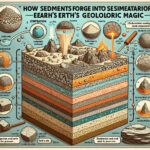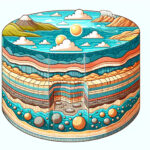“`html
Introduction to Sedimentary Rocks
An insightful look into what sedimentary rocks are and their significance in understanding Earth’s history.
Picture this: you’re walking along a serene beach, your feet sinking slightly into the sand with every step. As you gaze at the cliffs off in the distance, have you ever wondered how they came to be? Or perhaps you’ve come across a smooth, layered rock while hiking through a canyon, marveling at its intricate lines. These natural archives tell a much deeper story—a story set in stone by the very Earth itself.
They’re not just rocks; they’re sedimentary rocks, and they hold clues to the ancient environments of our planet. Formed from the accumulation of mineral and organic particles, these rocks build up layer by layer, compressing and solidifying over time to create the Earth’s geological history books. From the dramatic ridges that quintessentially signify the Grand Canyon to the coal that powers a portion of our electricity, sedimentary rocks are quintessential to both our natural and human-created landscapes.
Envision the process: rivulets carry silt, sand, and pebbles downstream, while the oceans beckon these materials to settle and add yet another page to its vast aquatic library. Through burial, pressure, and the passage of geologic eons, a distinctive rock is born, ready to share its secrets with any curious mind willing to decipher its tales. It’s not just geologists who crave knowledge of these formations; sedimentary rocks also yield precious fossil fuels and minerals sustaining our modern life.
Indeed, their existence is a testament to the dynamic and ever-evolving Earth. Each stratum represents a moment frozen in time—whether it was a period of tumultuous volcanic eruptions or the tranquil settling of a long-gone sea. Sedimentary rocks don’t just exist in the wilderness; they underpin some of the world’s greatest cities, fortifying the foundations of human achievement upon the storical strata that preceded us.
We invite you to join us on a journey, not just across the land, but through time itself. Gazing upon these rocks, you become a witness to the Earth’s vast and varied history — a lineage traced through grains of sand now cemented into rock. And as we peel back the layers, we find that these rocks are not only a cornerstone of our physical world but also a canvas on which nature has painted her most profound masterpieces.
“`
The Lifecycle of a Sedimentary Rock
Have you ever held a piece of sandstone or marveled at the striated layers in a cliff face? You’re actually holding or looking at the ancient pages of our planet’s diary. Sedimentary rocks are not just rocks; they’re records of Earth’s history. But where does their story begin? Let’s dig in and unearth the secrets of sedimentary rock formation.
Sedimentary rocks start their journey as loose sediments, the runaways from their parent rocks, fragmented through the relentless forces of weathering and erosion. Think about the mighty Colorado River sculpting the Grand Canyon or waves crashing onto the shore, breaking down rocks into gritty grains of sand. These sediments then embark on a voyage, often traveling long distances via wind, water, or ice, before finally settling down—think of it as nature’s way of laying a blanket over Earth’s surface.
From Wanderlust to Rest: Compaction and Cementation
The bed of a river or the bottom of an ocean becomes a treasure trove, capturing layers of sand, clay, and organic material, like a geological snapshot of time. As more and more sediments pile up, the immense pressure compacts these lower layers in a process likened to the gentle squeeze of a warm hug from Mother Earth. But it’s not just pressure at play here.
Enter cementation: nature’s glue. Minerals dissolved in water percolate through the sediment layers, working their magic to bind these grains together. This is when sediments trade their nomadic lifestyle for a more settled existence as solid sedimentary rocks. It’s much like how individual snowflakes, under the right conditions, form into a compact snowball.
Now, imagine a world where these processes didn’t occur. Without sedimentary rocks, we wouldn’t have rich reservoirs of groundwater or habitats for countless marine organisms. Even our day-to-day life is built on the back of sedimentary rocks—literally! Bricks made from clay and concrete from sand are just a couple of examples of sedimentary rocks’ omnipresence in our lives.
The Witness to Earth’s Chronicles: Depositional Environments
Just like detectives investigating a scene, geologists study sedimentary rocks to understand past environments. Each rock is a clue to conditions long gone. The ripple marks of a former beach or the fossilized remains of ancient sea creatures locked in limestone tell a story of a time when that part of the Earth might have been beneath an ocean.
Every step in the formation of sedimentary rocks plays a pivotal role in Earth’s geological narrative. In fact, you’re invited to witness a chapter of this story through a vivid explainer video. Dive in and watch as the intricate details of sedimentary rock formation come to life:
Whether clastic, formed by physical fragments of pre-existing rocks, or biochemical, resulting from the accumulation of organic materials – every sedimentary rock holds a piece of the puzzle of Earth’s past. And through understanding their formation, we gain insight into the dynamic processes that shape our world and the legacies they leave behind in stone.
Weathering and Erosion: The Starting Point
Imagine standing by a rugged mountain, watching water cascade down its slopes, or witnessing the relentless power of wind reshaping the desert dunes. What you’re witnessing are Earth’s very own artists at work, sculpting the landscape through weathering and erosion. These natural processes are like the universe’s set of tools, slowly breaking down the colossal pieces of our planet’s crust to set the stage for sedimentary rocks. It’s an epic tale of transformation, where even the mightiest boulder eventually succumbs to the forces of nature.
Let’s take weathering first. This is nature’s way of breaking up rocks without moving them an inch. Picture the acidic rain seeping into the cracks of a limestone cliff or the roots of a tree widening a crevice in a granite boulder. Now, that’s weathering for you! It’s fascinating, isn’t it? The very air we breathe, packed with Oxygen, teams up with water to chemically alter the rock’s composition. But hold on, we’ve got another force to contend with—erosion. This is when bits of rock, once weathered, start their journey elsewhere, thanks to the movement of water, wind, or ice. You’ve probably seen this process in action along a river bank or during a gusty day at the beach. If you’re eager to dive deeper into the nuances of these processes, check out this resource that lays out the differences between erosion and weathering.
Take the Grand Canyon, for instance, which serves as a colossal exhibit displaying the raw power of weathering and erosion. Here, the Colorado River has, over millions of years, chiseled a vast chasm into the landscape, leaving behind a labyrinth of geological history for us to traverse and admire. Within this grand narrative, sedimentary rocks emerge as chronicles, silently recording Earth’s evolutionary saga. To grasp the full breadth of their story, exploring the composition and classification of sedimentary rocks can provide a clearer picture of these geological archives.
As these tiny rock fragments journey along rivers, streams, or get whisked away by the wind, they eventually find repose, settling down in layers, often in a body of water or on the ocean floor. Over time, layers build upon layers, and with the aid of pressure, they cement together, birthing a brand new sedimentary rock. It’s like baking a cake, layer by layer, until it’s just right. Doesn’t that give you a whole new perspective on the humble stone beneath your feet?
Transportation and Deposition of Sediments
Imagine the life story of a single grain of sand, taking a monumental journey from a majestic mountain peak down to the vast ocean floor. This is not just a poetic image but a real-life saga of sediment transportation—one of nature’s most elaborate and continuous processes that eventually leads to the formation of sedimentary rocks.
Our journey begins when weathering breaks down solid rock into fragments. But that’s just the first step. Picture these fragments as adventurers, setting off on a tumultuous voyage, carried by wind, water, or ice. Rivers and streams become conveyor belts, whisking away grains of sand and flakes of clay in a swirling dance towards new horizons.
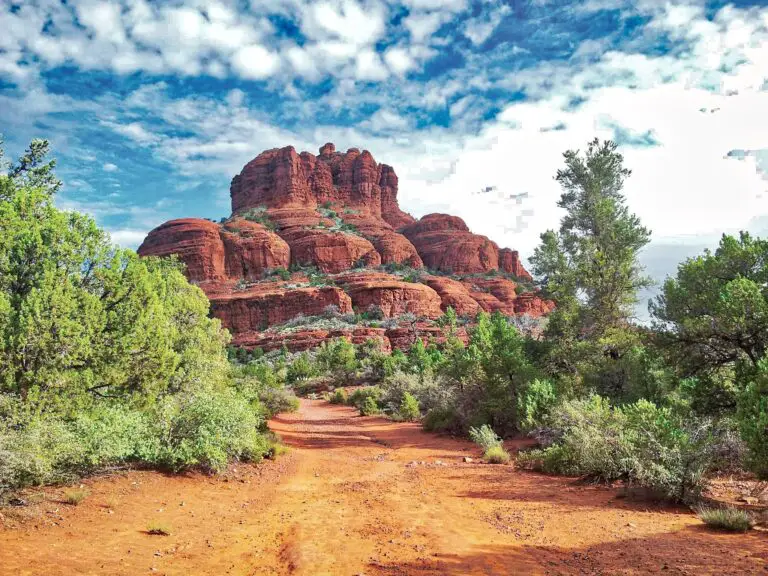
Consider the iconic Grand Canyon, carved meticulously by the Colorado River. The sediments that the river transports tell a story of resilience, as they bump and grind against each other, becoming ever finer. Over time, these particles will settle out of the water, laying themselves down in layers upon the riverbed, a testament to their long journey.
Pause and observe a peaceful river delta or a serene lake bed, the ultimate destinations where sediments come to rest. It’s here that the sediments are gently deposited, layer upon layer, in an artful deposition that takes geological patience. It’s a slow dance of sedimentation that demands respect, as these minuscule particles, once battered by the elements, settle into their final resting place, soon to be lithified into the sedimentary rocks that are Earth’s natural archives.
As artists use strokes of paint to build a masterpiece, Earth uses sediments to paint its own masterful landscapes. The transportation and deposition of sediments are not merely about rocks and minerals—it’s the Earth’s way of recording history, creating archives that geologists will ‘read’ for centuries to come.
Sedimentation and Strata Development
Delving into Earth’s geology, we uncover the narrative of sedimentary rocks, the extraordinary pages in our planet’s dynamic history book. These rocks form through a fascinating journey, beginning with the breakdown of pre-existing rocks, an odyssey from tiny grains to solid rock. It all starts with the process known as weathering, where rocks are relentlessly pounded by the elements, breaking them into smaller fragments. Blown by the winds, carried by rivulets and great rivers, these fragments embark on an adventure, ultimately resting in new environments where they accumulate layer by layer.
Imagine standing by a tranquil lake or a meandering river. As you gaze into the water, you witness a slow dance of particles settling to the bottom—a visual symphony marking the birth of future sedimentary rocks. As these sediments get buried under additional layers, they endure the weight of the world above, a pressure that compels them to stick together, akin to a crowded elevator, giving in to the tight embrace of compaction. Natural adhesives, such as minerals dissolved in water, seep through and cement these grains—much like a mineral glue turning loose sand into a gritty sandstone.
What’s truly mesmerizing is how each layer, or stratum, tells a different tale. Picture the alternating bands of sandstone and shale as chapters of Earth’s past, each differing in color, texture, and composition. These strata are akin to pages in a book, some thin and fine-grained, products of slow, serene conditions, while others are coarse and rugged, hinting at turbulent times when rivers flooded and majestic glaciers advanced and retreated, sculpting the landscape.
Here’s a glimpse into how sedimentary rocks come to life:
But sedimentary rocks are more than just archives of geological history. They are the reservoirs of precious resources—hosts to groundwater, natural gas, and oil. As you pore over these earthen manuscripts, you might also find clues to ancient environments that have long vanished, with fossils embedded in these rocks providing snapshots of life that once thrived. In essence, when we decipher these sedimentary sequences, we immerse ourselves in the epic tale of how Earth molds and preserves the fingerprints of time itself.
Lithification: From Sediment to Stone
Imagine you’re strolling along a serene beach, your feet sinking slightly into the wet sand with every step you take. Now picture that very sand beneath your feet embarking on an epic geological journey. A journey that will transform it, over millennia, into the solid stone underpinning majestic cliffs and monumental canyons. This is the beginning of how sedimentary rocks are formed, a process known as lithification.
Lithification is nature’s alchemy. When layers upon layers of sediments — like the sand at the beach, silt from riverbeds, or the skeletal remains of marine life — accumulate and are buried, they enter a world of increasing pressure. As the weight of overlying materials mounts, these sediments are pressed ever closer together, leading to compaction. Think of it as nature’s own trash compactor, but instead of crunching cans and boxes, it’s working on future layers of the Earth’s crust.
But compaction alone isn’t enough to cement the fate of sedimentary rocks. Here enters cementation, the process that glues the compacted particles together. Minerals dissolved in water, much like an artisan’s blend of natural adhesives, percolate through the sediment layers. As the liquid evaporates or moves on, these minerals crystallize, binding the particles in a rocky embrace. Imagine a snowball fight on a tiny scale, where instead of snowflakes sticking together, it’s grains of sand, each collision creating a mini-monolith destined to last for ages.
This transformation doesn’t happen overnight. It’s a slow and relentless process that requires just the right conditions and an unwavering persistence of natural forces. And the result? Natural archives capable of telling stories that span back hundreds of millions of years. Each layer, each rock, each stone is a page in Earth’s autobiography.
Now consider the Grand Canyon, not just a breathtaking vista but a geological mosaic pieced together over countless centuries. Each layer of this natural wonder is a testament to the relentless work of lithification, turning loose sediments into the stone tapestry we marvel at today.
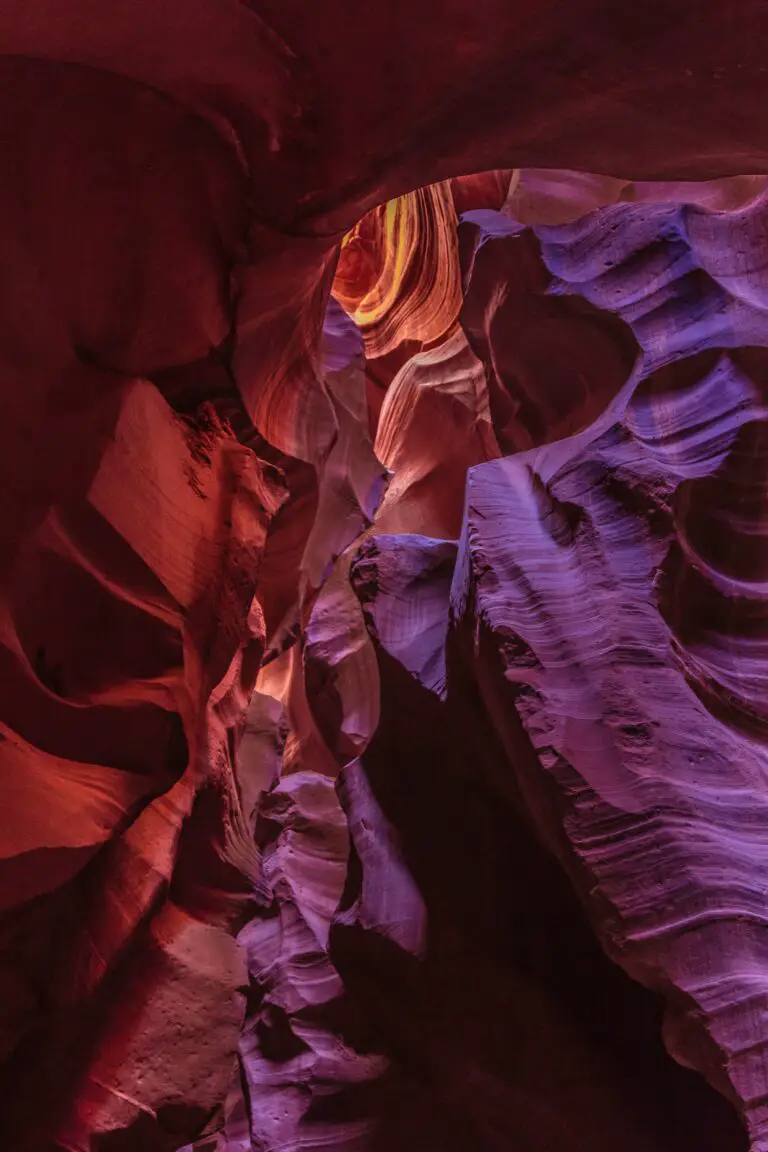
So the next time you pick up a pebble or stand atop a sandstone bluff, take a moment to appreciate the intricate and powerful forces of lithification at play. These sedimentary rocks aren’t just rocks — they’re the narrative of our planet’s past, one that you’re holding in the palm of your hand.
Types of Sedimentary Rocks Unearthed
Let’s drill down into the stratified world of sedimentary rocks, the Earth’s natural archives that record the very essence of our planet’s tumultuous past. These rocks are a time capsule, a solidified narrative of Earth’s ancient environments. But did you know these stony storytellers come in various intriguing types? Yes, they do!
Imagine you’re walking along a riverbank. Beneath your feet, you find pieces of shale and sandstone—these are clastic sedimentary rocks, and their tale is one of journeys and reunions. Forged from fragments of older rocks, mineral grains, and organic materials, they have been eroded away by water, wind, or ice, only to come back together, compacting and cementing into new formations. It’s like a geological reunion where every grain has its own backstory of where it’s been and what it’s endured.
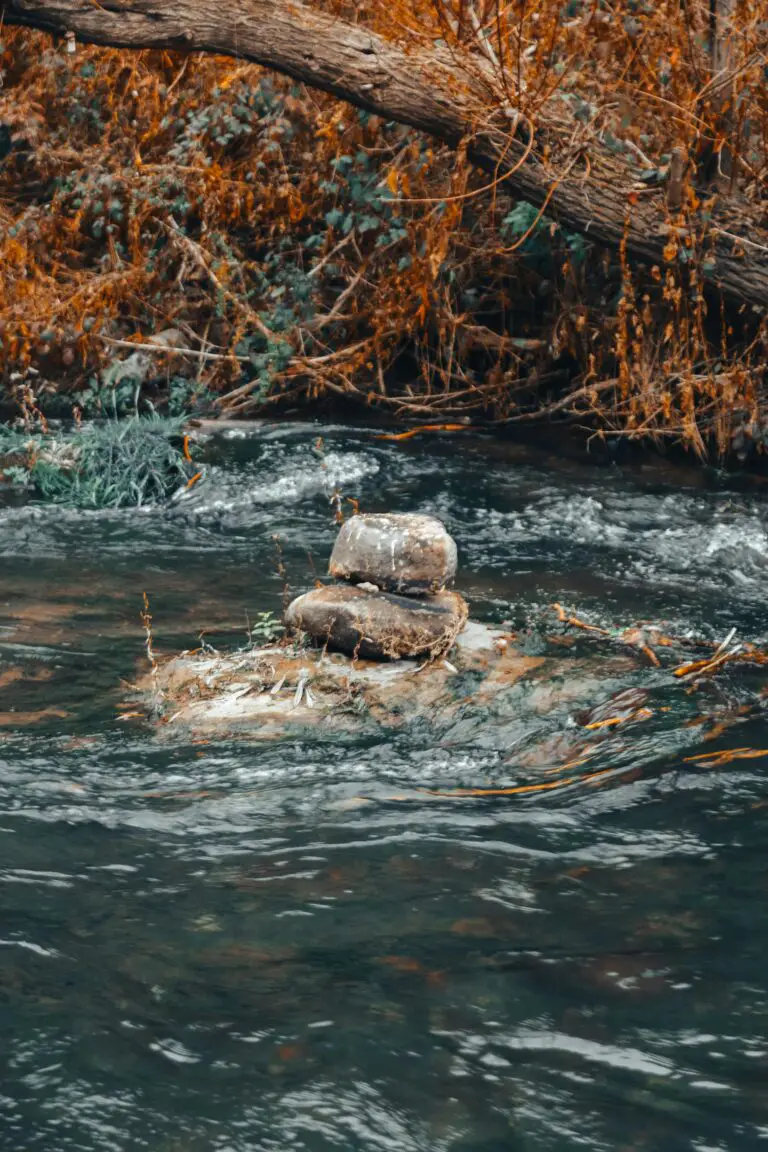
Next, let’s wade into the realm of chemical sedimentary rocks. Close your eyes and envisage a vast, serene lake with water as still as glass. Over time, minerals dissolved in the water begin to precipitate out, eventually settling to the bottom. This mineral-rich layer turns over eons into rocks such as limestone and halite—each stone a page out of the water’s chemical diary, outlining the conditions and compounds that prevailed in that aquatic chapter of Earth’s history.
Lastly, our journey through the sedimentary library brings us to organic sedimentary rocks. Picture a dense swamp teeming with life, from towering plants to microorganisms. As they live and perish, their organic remnants collect on the swamp’s floor, layer upon layer, compressing under the weight of time and turning into coal or oil shale. These are the remnants of life itself, preserved in stone and fuel, a testament to the lush living landscapes that once flourished on our planet.
Each type of sedimentary rock, whether clastic, chemical, or organic, represents a unique chapter of Earth’s grand narrative. Moreover, they are not mere rocks but storytellers whispering tales of the dynamic processes that have shaped our world. Thus, as you hold a sedimentary rock in your hand, you’re not just holding a piece of the Earth—you’re holding a piece of its history.
Unraveling Sedimentary Structures
Just as a historian deciphers ancient scripts to understand our past, geologists rely on the intimate details of sedimentary rocks to decode Earth’s history. Sedimentary structures, those intricate patterns and arrangements within rock layers, are like pages from a storybook, each holding clues to a time long before us. Let’s embark on a journey to discover how these geological manuscripts, namely bedding, cross-bedding, and ripple marks, offer us a glimpse into ancient environments.
The Tale of Bedding Planes
Imagine layers of a cake, each one spread out perfectly over the last – that’s what geologists see when they look at bedding planes. These horizontal layers tell a tale of tranquility, where particles like sand, silt, and clay settled down through still waters to form a flat, even bed. However, it’s not just the peace of a prehistoric seabed that they reveal. Changes in the texture or composition of these layers can speak volumes about shifts in climate or sea levels, episodic events like volcanic eruptions, or the steady drift of landscapes over millennia.

Deciphering Cross-Bedding
Now, let’s turn the page to cross-bedding. Unlike the uniform layers of bedding planes, cross-bedding showcases angled layers that crisscross each other. Picture the windswept dunes of a desert or the flow of water in a river – these are the sculptors of cross-bedding. They craft a dynamic diary of environments where winds or currents were once in power, directing the migration of sediments in patterns that defy the pull of gravity. These angled layers lock in secrets about the direction and strength of ancient winds and water flows, chronicling events that shaped the surface of our planet.
Ripple Marks: The Rhythm of Ancient Currents
On a smaller scale, yet equally telling, are ripple marks. These delicate ridges and troughs, found etched on rock surfaces, are the frozen music of water or wind currents. As rhythmic as the waves on a shoreline, these features record the dance of elements over sediment. They can tell us whether a body of water was once calm or stormy, or if a breeze was gentle or fierce. Ripple marks serve as a testament to the day-to-day conditions of Earth’s yesteryears, preserving the tempo of the natural forces that played upon its surface.
Each sedimentary structure we unearth is a piece of the puzzle in understanding our world’s ancient environments. Through meticulous examination and interpretation, we learn not only about the Earth’s physical past but also begin to appreciate the intricate processes that have been shaping our planet for millions of years. So, the next time you come across a sedimentary rock, take a moment to ponder the stories it holds within its grains, for it is a natural archive of Earth’s memoirs.
Fossils: The Time Capsules Within
Imagine unraveling a story that’s been etched in stone for millions of years—this is the thrilling tale sedimentary rocks narrate through the fossils they harbor. As these rocks form layer by layer, they become the guardians of history, capturing life’s legacy in the very grains of their existence.
Take, for example, the arresting image of a fossil embedded within a sedimentary rock  —what you’re witnessing is a snapshot of the distant past, preserved with miraculous clarity. It’s not merely a stone; it’s a biological time capsule offering us a glimpse into the ancient world.
—what you’re witnessing is a snapshot of the distant past, preserved with miraculous clarity. It’s not merely a stone; it’s a biological time capsule offering us a glimpse into the ancient world.
Sedimentary rocks are like pages in Earth’s vast, geologic library. They preserve fossils better than any other rock type, making them invaluable to paleontologists. These rocks house the remains of creatures from the minuscule trilobite to the mighty dinosaur, all the while detailing the environmental conditions of that era.
In essence, fossils are Earth’s meticulously kept records of life’s evolution, chronicling the shifts from primordial seas to the diverse ecosystems of today. Each fossil discovery peels back a layer of time, revealing stories of survival, adaptation, and the inexorable march of life through the eons.
Within these rock formations, we uncover clues to Earth’s antiquity: the rise and fall of species, the changing climates, and the dynamic processes that have sculpted our planet’s surface. It is a testament to the incredible journey of life on Earth, with each fossil contributing a piece to the grand puzzle of our planet’s history.
Studying Sedimentary Rocks: Methods and Tools
Unlocking the secrets of sedimentary rocks is akin to a detective unraveling a mystery that spans millions of years. Just like a sleuth with their magnifying glass, geologists have their own set of nifty tools and sophisticated methods to study these geological treasures. It’s not just about examining the rocks themselves—it’s an exploration into Earth’s dynamic past, piece by fascinating piece.
Fieldwork: The Geologist’s Ground Truth
Imagine standing on the edge of the Grand Canyon, its layers upon layers telling a story of ancient rivers, vast deserts, and primal seas. Here, in the vast open-air archive, geologists begin their study of sedimentary rocks with meticulous fieldwork. Armed with rock hammers, hand lenses, and GPS devices, they collect samples and record observations directly from the source—the very ground beneath their feet.
But fieldwork isn’t just a matter of collecting. It’s an exercise in context. A geologist examines the rock’s bedding, notes any cross-stratification, searches for ripple marks—or maybe even finds the holy grail of sedimentology: fossils. These remnants of ancient life tell tales of environments long gone and give clues to the climatic conditions of yore.
Laboratory Analysis: A Deep Dive Into Rock’s DNA
Back in the lab, the rock samples undergo a transformation from mere physical objects to carriers of data. Cutting-edge technologies like X-ray diffraction (XRD) and scanning electron microscopy (SEM) allow geologists to peek into the mineralogical makeup of the rocks. These methods can identify the tiny crystals and grains that hold the secrets of their origin.
Chemical analysis, especially mass spectrometry, sheds light on the elemental composition of the samples, providing further pieces to the puzzle. These might reveal ancient seawater’s chemistry or the types of vegetation that decomposed to become part of the sedimentary record. It’s a narrative of Earth’s history written in stone.
Real-Life Examples: Time Capsules of Earth’s History
Let’s take a journey to the cliffs of Dover. Those iconic white cliffs are, in fact, made from microscopic organisms that settled on the sea floor millions of years ago. Each layer represents a page in Earth’s diary, meticulously recording events for posterity.
Or consider the oil rich sedimentary rocks of the Middle East. The black gold that powers our world today began as organic material in vast, ancient oceans. The transformation from decayed organisms to hydrocarbons is a fascinating lesson in geological alchemy, one that sedimentologists strive to understand through rigorous study.
With every rock they crack open, geologists unearth stories of dynamic changes, of continents drifting and colliding, of mountains rising and eroding away. By studying these ordinary-looking stones, we open the door to understanding the extraordinary processes that have shaped our planet over aeons.
The study of sedimentary rocks brings together field excursions and lab analyses to paint a full picture of geological processes. Watch this video to see how geologists decipher the clues held within these natural archives:
Sedimentary Rocks and Human Civilization
Envision a world where cities are devoid of towering skyscrapers, the energy sector starves for resources, and the foundations of our infrastructure crumble. This could very well have been our reality if not for the treasures hidden within sedimentary rocks. Far from being inert stones, these geological gifts have spurred on human civilization, providing the raw materials for some of its greatest achievements.
As we dig into the significance of sedimentary rocks, let’s unearth their role in the construction industry. Limestone and sandstone have been the backbone of architectural marvels since ancient times. From the majestic Egyptian pyramids to the grandeur of Roman coliseums, sedimentary rocks have provided the strength and durability needed for these historic structures to defy the ages. In our modern cities, they form the bedrock of homes, offices, and monuments, shaping the skyline with their sturdy presence.
Now, imagine a world without energy. Hard to picture, isn’t it? Sedimentary rocks are the unsung heroes in this narrative, hosting vast reserves of coal, oil, and natural gas. These energy powerhouses, formed from the remnants of prehistoric plants and animals, have ignited the spark of industrial revolutions and continue to fuel our everyday lives. They keep our homes warm, our vehicles running, and our industries thriving, illuminating the way toward progress.
The versatility of sedimentary rocks extends beyond construction and energy; they are pivotal in industries like agriculture, where phosphate rocks are crucial for fertilizers that nourish the crops to feed a growing population. Clays and shales, too, play a fundamental role in ceramics and pottery, crafting items that hold both utilitarian and aesthetic value.
Substantial yet often unseen is the strategic importance of sedimentary rocks in aquifers, natural underground reservoirs that store freshwater. In these subterranean mazes, water is naturally filtered through layers of permeable rocks such as sandstone, ensuring a supply of clean water that sustains life and industry alike.
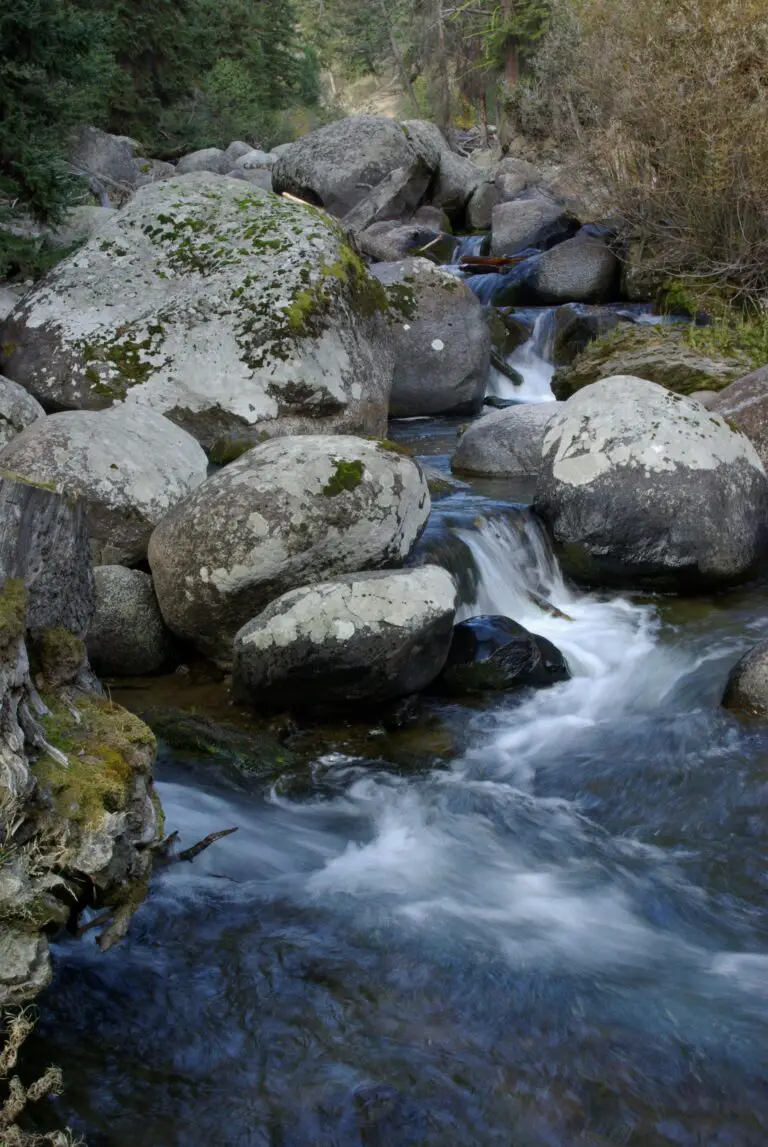
In every layer, fold, and grain of these sedimentary marvels, there’s a story of how they’ve sustained and advanced human civilization. Their ubiquitous presence and utility render them not just rocks, but the very foundation upon which our society continues to build and thrive.
Frequently Asked Questions
Embark on a geological journey as we unravel the enigmas of sedimentary rocks—Earth’s natural historians. With each layer telling a fascinating tale of time, let’s explore some of the burning questions that captivate both budding geologists and the simply curious.
What Triggers the Formation of Sedimentary Rocks?
Imagine Earth as a colossal recycling facility. Sedimentary rocks begin their life through the breakdown of pre-existing rocks, a process spurred by weathering. Forces of nature such as wind, water, and temperature fluctuations chip away at the rocks, creating tiny grains that journey across our planet. Over time, these sediments come to rest, layering in silent reservoirs. Compacted by the sheer weight of accumulation, cemented by minerals in groundwater, they eventually solidify into the sedimentary wonders we discover.
Are There Different Types of Sedimentary Rocks?
Absolutely! Step into a natural gallery showcasing an array of sedimentary masterpieces. Clastic sedimentary rocks, like conglomerates and sandstones, are crafted from the fragments of former rocks. Chemical sedimentary rocks, such as halite and gypsum, arise from minerals precipitated out of solution. Organic sedimentary rocks—think coal and limestone—tell a tale of life long past, formed from the remains of plants and animals compressed over the eons.
Where Can We See Sedimentary Rocks in Real Life?
Nothing compares to seeing these geological archives in their natural setting. Sedimentary rock formations create some of the most breathtaking landscapes. Marvel at the grandeur of the Grand Canyon or the vibrant cliffs of the Badlands. Not just confined to massive canyons and cliffs, sedimentary rocks are ubiquitous; they form the bedrock beneath our feet in many regions, and they are the stones we skip across a calm lake.
How Does Studying Sedimentary Rocks Benefit Us?
Poring over these stony pages of Earth’s history book provides invaluable insights. They reveal ancient climates, guide us to natural resources like oil and groundwater, and even aid in understanding planetary bodies beyond our own. Sedimentary rocks are not mere stones; they are the keys to unlocking mysteries of the past and securing treasures for the future.
Now, to truly visualize this extraordinary process, let’s dive into a digital experience. The following video courteously simplifies the formation of sedimentary rocks in a way that both enthralls and educates:
If the sedimentary world has piqued your interest, remember that every pebble tells a story, and every grain is a snapshot of geological history. So the next time you hold a sedimentary rock, think of the incredible journey it’s been on to get into your hands—a voyage through time and the elements.
